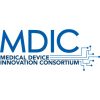The skin is a dynamic organ, reflecting who we are in the presence or absence of a health condition or disease. As the largest organ in the body, skin is critical to the maintenance of our bodies and our health.1,2 When skin is damaged, it can negatively impact our psychological and physical health. The skin’s ability to act as a barrier against damage and infection depends on a variety of factors, including: Structure of skin, genetics and lifestyle, environmental factors, how skin changes over your lifetime, underlying conditions and diseases.
Skin is the body’s first line of defense but, for a scientist or design engineer, it can be a complex barrier to designing adhesives, dressings and devices for both healthy and compromised skin. As a living, breathing organ, skin sweats, stretches and grows hair. It can behave differently based on age, race, diet or medical condition. As technology advances, the demand for adhesives and devices that attach to our skin increases—from wound care dressings to drug delivery solutions and wearable sensors. Scientists and engineers must answer complex questions when choosing the right adhesive system for these devices, such as: How long will the adhesive or device remain on the patient? Where will the adhesive or sensor be placed on the body? What skin types or conditions will be encountered?
It is critical that scientists and engineers understand the true functional characteristics of the skin when it comes to designing adhesives and wearable devices. Meeting the challenges of skin requires a comprehensive, integrated device design framework. This framework explores maintaining the integrity of the skin, ensuring adhesives and devices are safely secured to the skin and preventing complications.
There is a myriad of ways skin can be injured or compromised when using a medical device. This can result in pain and infection, and may lead to a lower quality of life for patients, higher healthcare costs and serious, even life-threatening, complications. But work is underway to advance clinical practice and to better understand the science of skin. Clinicians, skin injury and infection experts, industrial manufacturer, and science companies have collaborated to develop better ways to assess each patient, improve practice standards, create better processes and team approaches, and invent better products and therapies to help protect the skin.
For medical device engineers, skin should never be an afterthought. Instead, it should be a core consideration for the use of any medical device that interacts with or adheres to the skin.
References
- Adam EK, Quinn ME, Tavernier R, et al, Diurnal cortisol slopes and mental and physical health outcomes: a systematic review and metaanalysis. Psychoneuroendocrinology. 2017;83:25-41.
- Jozic I, Stojadinovic O, Kirsner RSF and Tomic-Canic M, Skin under the (spot-)light: cross talk with the central hypothalamic pituitary adrenal (HPA) axis. J Invest Dermatol. 2015;135:1469-1471.








